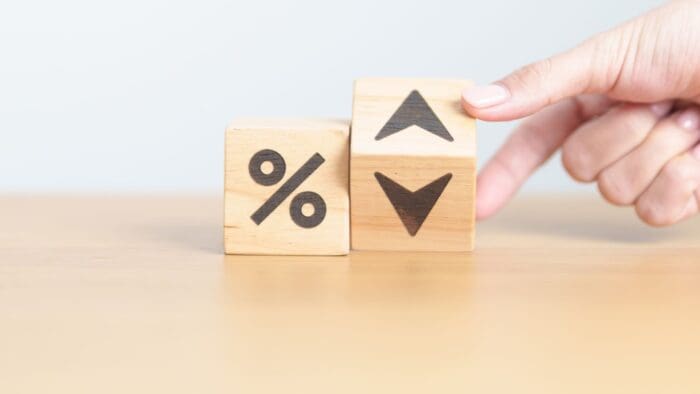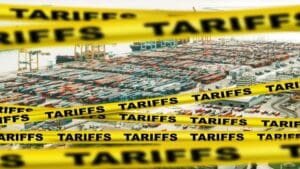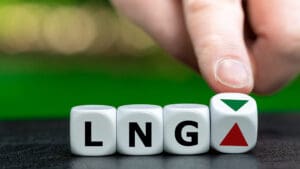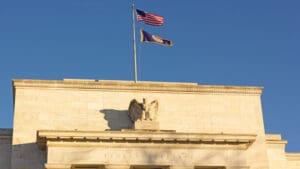By David Cox, CMT, CFA, FCSI, FMA and Conor White CMT, CIM
1/ S&P 500
2/ Stage 2 Health?
3/ 16-Years of Relative Strength
4/ U.S. Financial Sector
5/ U.S. Banks ($KBE)
Investopedia is partnering with CMT Association on this newsletter. The contents of this newsletter are for informational and educational purposes only, however, and do not constitute investing advice. The guest authors, which may sell research to investors, and may trade or hold positions in securities mentioned herein do not represent the views of CMT Association or Investopedia. Please consult a financial advisor for investment recommendations and services.
1/ S&P 500
All-time highs. For all the debate about whether stocks should go up, or can go up further, one thing is certain, they just made all-time highs. At all-time highs, there are no investors sitting in a losing position on their exposure and instead, it’s the short sellers who are on the wrong side and who sit with losses. And those short sellers remain fuel for the future, given they represent forced buying vs. the rest of investors who can make their own informed decisions. When prices push past prior highs, which can offer resistance, they take away another piece of the bearish narrative that some have clung to, since the market bottomed 15-months ago.

2/ Stage 2 Health?
Following on the work of Stan Weinstein, I like to keep an eye on the percentage of stocks that are in a #Stage2 uptrends. How do we define it? Price needs to be above a 200-day moving average. The 150-day moving average must be above the 200-day moving average AND, the 200-day moving average must be rising itself. When the % of stocks in #Stage2 uptrends improves to more than 30% after a bear market, it tends to evidence sufficient improvement to see higher prices. The S&P 500 currently has 51.5% of stocks in #Stage2 uptrends. Not nearly what we saw at the highs in 2020 (yet?), when more than 80% of stocks were there, which perhaps offers lots of room yet for further improvement.

3/ 16-Years of Relative Strength
Many investors spend an inordinate amount of time trying to figure out what stock is going to rise, or what stock deserves to fall. By using relative strength, we can seek to understand what stocks, or groups of stocks, are rising (or falling) more strongly than the market itself. Because if we as investors, want to beat (outperform) the stock market, we have own stocks that are rising more strongly. The semiconductor stocks are shown here, vs. the S&P 500. The chart shows that since the 2008 lows, the semiconductor stocks have been in a relative uptrend for the past 16 years (that’s a LONG time!). And so any debate about this group of stocks aside, do know, that a 16-year relative weekly chart won’t change on a dime or with a down day in the market. Know the trend and follow the trend, until the trend ends.

4/ U.S. Financial Sector
The financials have been pretty weak for some time and certainly far from an exciting part of the market since the 2022 lows. But we’re seeing some very constructive action if we look underneath, and in this case, let’s do some more Stage 2 analysis on the SPDR Financials ($XLF) sector. You can see that we just saw a surge of stocks come to life after the August – October, 2023 correction and we now have 79.2% of stocks in #Stage2 uptrends, the highest level since 2021.

5/ U.S. Banks ($KBE)
With the improvement just discussed in the financial sector, let’s look at another chart, this time of the SPDR Bank ETF ($KBE), which itself is in a relative uptrend vs. the SPDR Financial ($XLF) and outperforming the broader sector. It has reclaimed March ’23 breakdown level, that happened when a number of U.S. financial institutions collapsed, and that in itself is constructive action. Now, you can see on the daily chart (green arrow), a pullback against the recent breakout and right down to the line that marked the collapse level. In the bottom panel, we can see further, that the $KBE is outperforming the S&P 500 by about 5% over the past six-months. Relative strength helps us, so let’s be open minded about what it tells us, regardless of our own opinions.

—
Originally posted 23d January 2024
Disclosure: Investopedia
Investopedia.com: The comments, opinions and analyses expressed herein are for informational purposes only and should not be considered individual investment advice or recommendations to invest in any security or to adopt any investment strategy. While we believe the information provided herein is reliable, we do not warrant its accuracy or completeness. The views and strategies described on our content may not be suitable for all investors. Because market and economic conditions are subject to rapid change, all comments, opinions and analyses contained within our content are rendered as of the date of the posting and may change without notice. The material is not intended as a complete analysis of every material fact regarding any country, region, market, industry, investment or strategy. This information is intended for US residents only.
Disclosure: Interactive Brokers Third Party
Information posted on IBKR Campus that is provided by third-parties does NOT constitute a recommendation that you should contract for the services of that third party. Third-party participants who contribute to IBKR Campus are independent of Interactive Brokers and Interactive Brokers does not make any representations or warranties concerning the services offered, their past or future performance, or the accuracy of the information provided by the third party. Past performance is no guarantee of future results.
This material is from Investopedia and is being posted with its permission. The views expressed in this material are solely those of the author and/or Investopedia and Interactive Brokers is not endorsing or recommending any investment or trading discussed in the material. This material is not and should not be construed as an offer to buy or sell any security. It should not be construed as research or investment advice or a recommendation to buy, sell or hold any security or commodity. This material does not and is not intended to take into account the particular financial conditions, investment objectives or requirements of individual customers. Before acting on this material, you should consider whether it is suitable for your particular circumstances and, as necessary, seek professional advice.
Disclosure: ETFs
Any discussion or mention of an ETF is not to be construed as recommendation, promotion or solicitation. All investors should review and consider associated investment risks, charges and expenses of the investment company or fund prior to investing. Before acting on this material, you should consider whether it is suitable for your particular circumstances and, as necessary, seek professional advice.



















Join The Conversation
For specific platform feedback and suggestions, please submit it directly to our team using these instructions.
If you have an account-specific question or concern, please reach out to Client Services.
We encourage you to look through our FAQs before posting. Your question may already be covered!